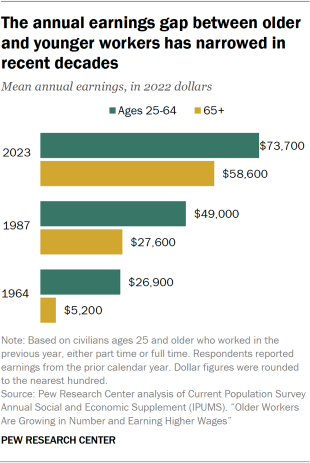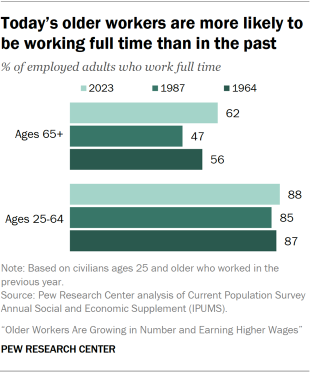An older worker refers to an employed person age 65 or older.
A younger worker refers to an employed person age 25 to 64.
The workforce refers to the employed population ages 16 and older.
The labor force includes all who are employed and those who are unemployed but looking for work.
Full-time work is defined as 35 hours a week or more.
References to White, Black and Asian Americans include those who report being only one race and are not Hispanic. Hispanics are of any race. The Current Population Survey did not include Asian as a separate racial category until 2003, and data for Hispanics is not available until 1971.

Today, the average annual earnings of older workers lag behind those of younger workers, but the gap is nowhere near what it once was. In 1964, the average annual earnings of workers ages 65 and older were 19% of the average earnings of workers ages 25 to 64: $5,200 vs. $26,900, respectively. (Figures in this analysis are in 2022 dollars.)
By 1987, the earnings gap had narrowed to 56%. And today, the average older worker earns 80% of the average annual earnings of younger workers ($58,600 vs. $73,700).

The earnings gap has narrowed in part because older workers are working more hours than they used to. In 1964, 56% of older workers worked full time. By 1987, that share had fallen to 47%. Today about 62% of workers ages 65 and older work full time.
Over the course of a year, the average older worker works 1,573 hours, up from 1,213 hours in 1987. Younger workers are also working more hours than they used to, on average, but this increase has been more modest.
The annual earnings gap has also narrowed because the hourly wage gap between older workers and younger workers has narrowed.




